Frost Protection - UTL Repository
Frost Protection - UTL Repository
Frost Protection - UTL Repository
You also want an ePaper? Increase the reach of your titles
YUMPU automatically turns print PDFs into web optimized ePapers that Google loves.
RECOMMENDED METHODS OF FROST PROTECTION<br />
increases absorption of solar radiation. However, when the surface is wet, then<br />
evaporation is also increased and the energy losses to evaporation tend to<br />
counterbalance the benefits from better radiation absorption. It is best to wet dry<br />
soils well in advance of the frost event, so that the sun can warm the soil.<br />
Removing cover crops<br />
For passive frost protection, it is better to remove all vegetation (cover crops)<br />
from orchards and vineyards. Removal of cover crops will enhance radiation<br />
absorption by the soil, which improves energy transfer and storage. Cover crops<br />
are also known to harbour higher concentrations of ice-nucleation active (INA)<br />
bacteria than many orchard and vine crops, so the presence of vegetation on<br />
orchard and vineyard floors increases the INA bacteria concentrations on the<br />
crop and hence the potential for frost damage.<br />
Generally, mowing, cultivation and spraying with herbicides are methods to<br />
remove floor vegetation. If possible, the cover crop should be mowed<br />
sufficiently early to allow the residue to decompose or the cut vegetation should<br />
be removed. For grass taller than about 5 cm, there is little difference in orchard<br />
floor surface temperature, but the surface temperature increases as the canopy<br />
gets shorter, to the highest minimum surface temperature for bare soil. Orchard<br />
floor minimum surface temperature differences as high as 2 °C have been<br />
reported between bare soil and 5-cm high grass. However, the air temperature<br />
difference is likely to be less than 2 °C. Cultivation should be done well before<br />
the frost season and the soil should be compacted and irrigated following the<br />
cultivation to improve heat transfer and storage. The most effective method is to<br />
use herbicides to kill the floor vegetation or keep down the growth. Again, this<br />
should be done well in advance of the frost-prone period.<br />
Soil covers<br />
Plastic covers are often used to warm the soil and increase protection. Clear<br />
plastic warms the soil more than black plastic, and wetting the soil before<br />
applying the plastic further improves effectiveness. Sometimes vegetative<br />
mulches are used during dormancy of tree crops to help prevent damage to roots<br />
due to freezing and soil heaving; however, vegetative mulches reduce the transfer<br />
of heat into the soil and hence make orchard crops more frost prone after bud<br />
break. In general, vegetative mulches are only recommended for locations where<br />
soil freezing and heaving are a problem. For non-deciduous orchards, pruning<br />
up the skirts of the trees allows better radiation transfer to the soil under the trees<br />
and can improve protection.<br />
23



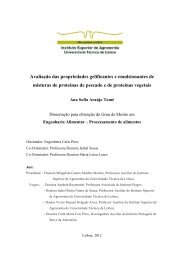
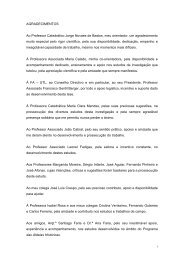
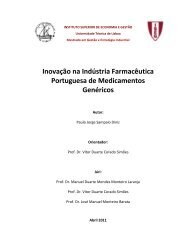
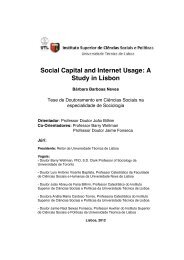
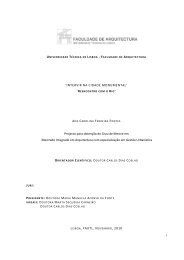
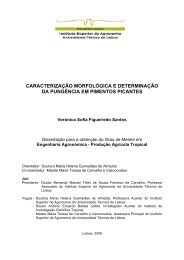

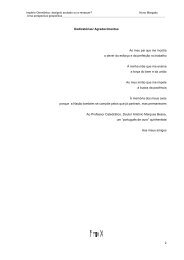

![Tese - Es..[1].pdf - UTL Repository - Universidade Técnica de Lisboa](https://img.yumpu.com/25707135/1/184x260/tese-es1pdf-utl-repository-universidade-taccnica-de-lisboa.jpg?quality=85)


